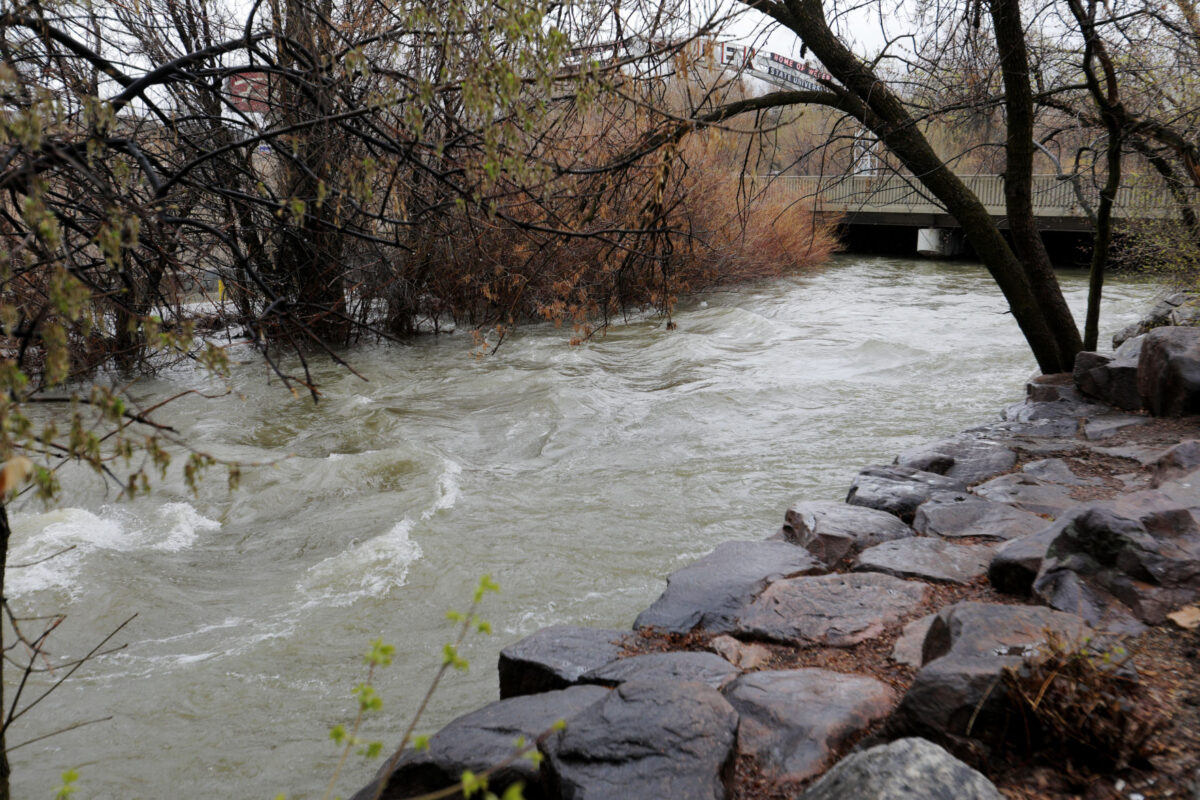After wet spring, Northern Utah rivers will run full and be ‘quite dangerous’ this spring
OGDEN — April showers are credited with bringing May flowers, but this month’s unusually wet, cold weather might also usher in flooding and dangerous conditions.
Utah’s water experts say May’s warming trends will determine how quickly this year’s outsized mountain snowpack makes its way into the valleys and reservoirs.
Brian McInerney, a National Weather Service hydrologist in Salt Lake City, said that Utah’s water levels have hit 150 to 190 percent of average across the state, with larger numbers registering further south. So spring runoff is expected to measure roughly 120 to 130 percent of average.
“The volume of runoff is going to be quite large. The rivers are going to run probably near-bank full and are going to be quite dangerous this spring,” McInerney said. “And it’s going to start later that what we most typically see — and end later than what we typically see.”
But Utah’s weather pattern this spring has been far from typical.
“We usually melt snow out the first week of April, but with this continued wet weather we’re having we’re now in the third week of April and don’t see any pattern shift,” McInerney said, predicting that rain and snow could fall through the end of the month.
However, Mother Nature could modulate May’s warmup with nighttime temperatures that allow mountain snowpack to refreeze, then flow during the day. But there is no guarantee that temperatures will cooperate as the sun’s angle continues to rises in the sky
On the other hand, this year’s snowpack and rainfall have helped rid Utah of harsh drought conditions.
“If you think in terms of water supply, this is great,” McInerney said. “So it depends on how you look at it, whether the glass is half full or half empty.”
However, that glass half-full analogy could also apply to some basements depending on the speed of this year’s snowmelt. One inch per day is typical, McInerney said, but if two inches can quickly wreak havoc.
“That’s when channels that have been formed over thousands of years can’t handle that volume of water coming out of the mountains all at once,” McInerney said. “So you have overbank flow … damaging structures, flooding basements,eroding roads, damaging bridges, those kinds of scenarios. That could be our fate if we continue to add snow to the snowpack in early May.”
Troy Brosten, a hydrologist with the Natural Resources Conservation Service in Utah, described similar conditions in 2011 when above-average snowpack peaked the first week of May.
“But it melted out at a reasonable rate with minimal flooding,” Brosten said. “It boils down to how fast it melts out.”
Western Weber County did see significant property damage in April 2011 due to heavy flooding. That event spurred a federally-funded, multi-million-dollar flood mitigation project that finished up in 2015.
Brosten said soils had been super-saturated heading into that winter, boosting the potential for flooding in some low-lying areas.
According to the Wednesday’s NRCS snowpack report, the basin index for the Weber-Ogden Rivers hit 154 percent Wednesday.
Coupled with fears about flooding, loss of life around cold, fast-moving waterways also poses a potential problem.
“My biggest concern right now is that rivers are going to be running so fast and so full and so big that we’re going to have people die by falling in,” McInerney said. “Within two minutes you’re hypothermic, and you can’t get out of the water. They’re incredibly treacherous.”







